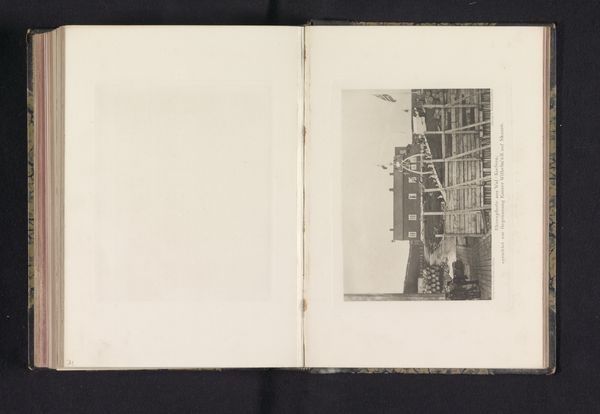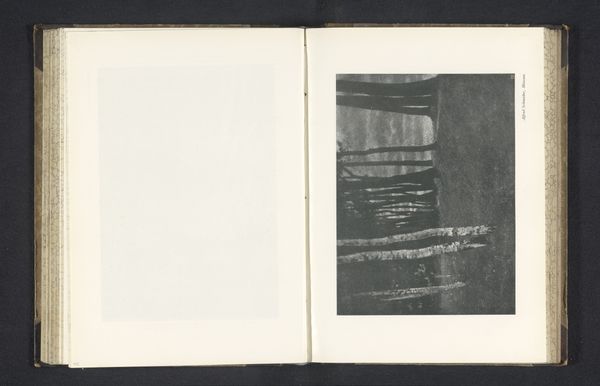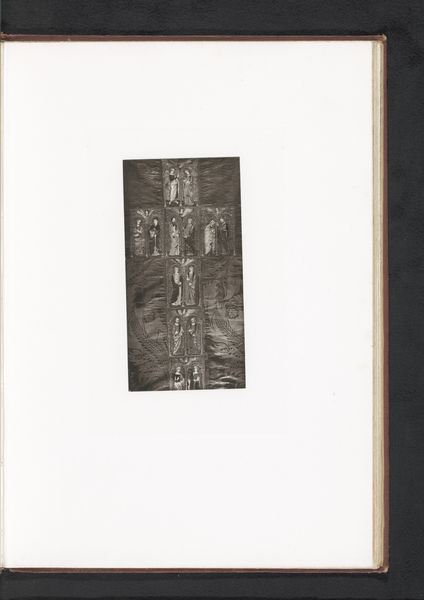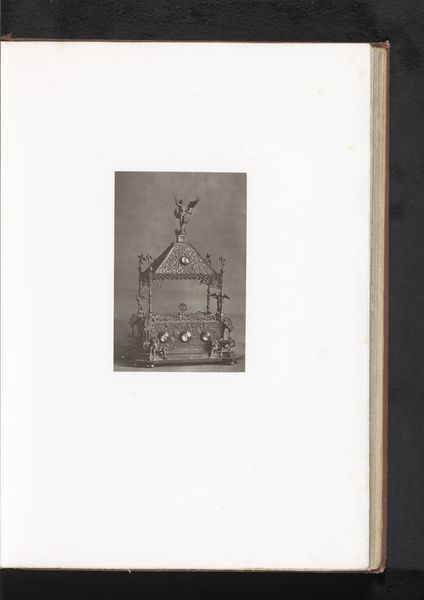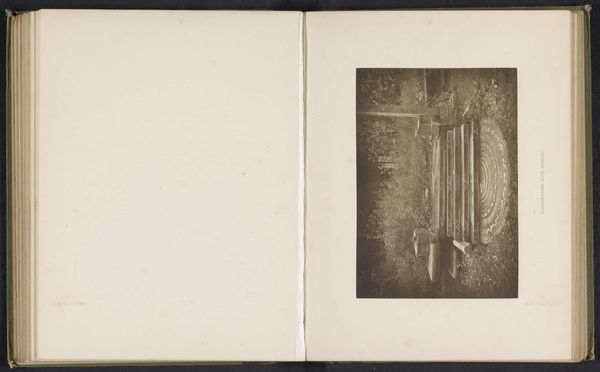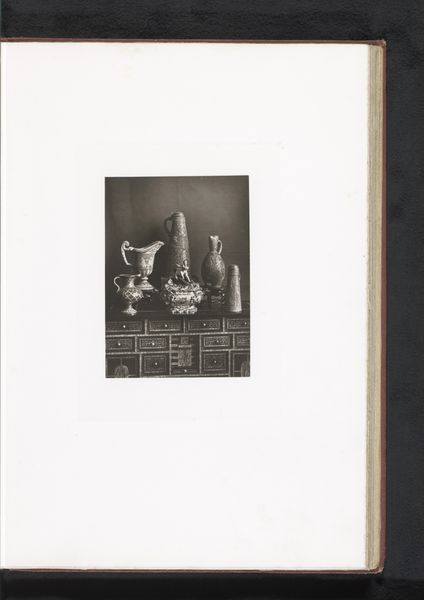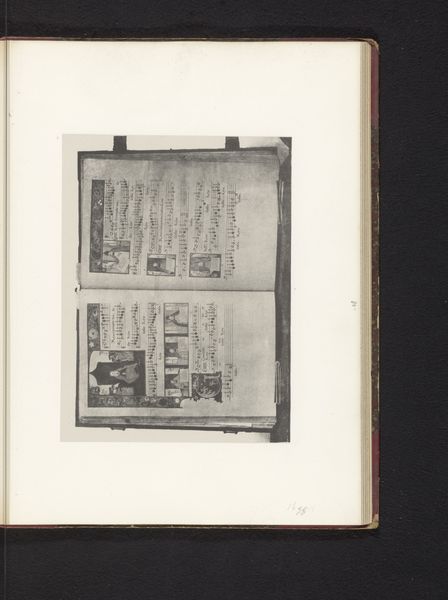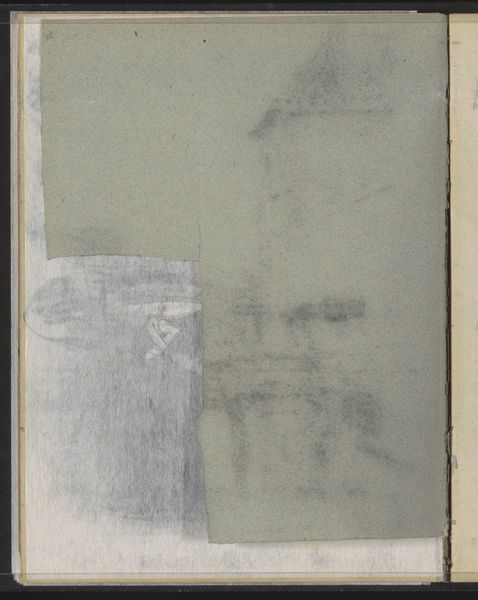
Vijf objecten van edelmetaal, opgesteld tijdens de Exposition Rétrospective van 1873 in Tours, Frankrijk 1873
0:00
0:00
print, metal, photography
#
16_19th-century
# print
#
metal
#
photography
Dimensions: height 104 mm, width 130 mm
Copyright: Rijks Museum: Open Domain
Gabriel Blaise created this photograph of five precious metal objects during the Retrospective Exhibition of 1873 in Tours, France. These objects aren’t just aesthetic items; they’re artifacts deeply embedded in France’s social and cultural history, reflecting the tastes and values of the elite during the Second Empire and the early Third Republic. Consider the cultural context: France in 1873 was a nation grappling with the aftermath of the Franco-Prussian War and the Paris Commune. Exhibitions like this served a public role, aiming to celebrate French craftsmanship and national identity during a period of recovery and uncertainty. Institutions like museums and galleries played a crucial role in shaping artistic production and consumption, reinforcing certain social norms and values. To truly understand the photograph’s significance, we might turn to exhibition catalogs, period journals, and social histories. The meaning of art isn't fixed; it's always contingent on the social and institutional context in which it's created and viewed.
Comments
No comments
Be the first to comment and join the conversation on the ultimate creative platform.

